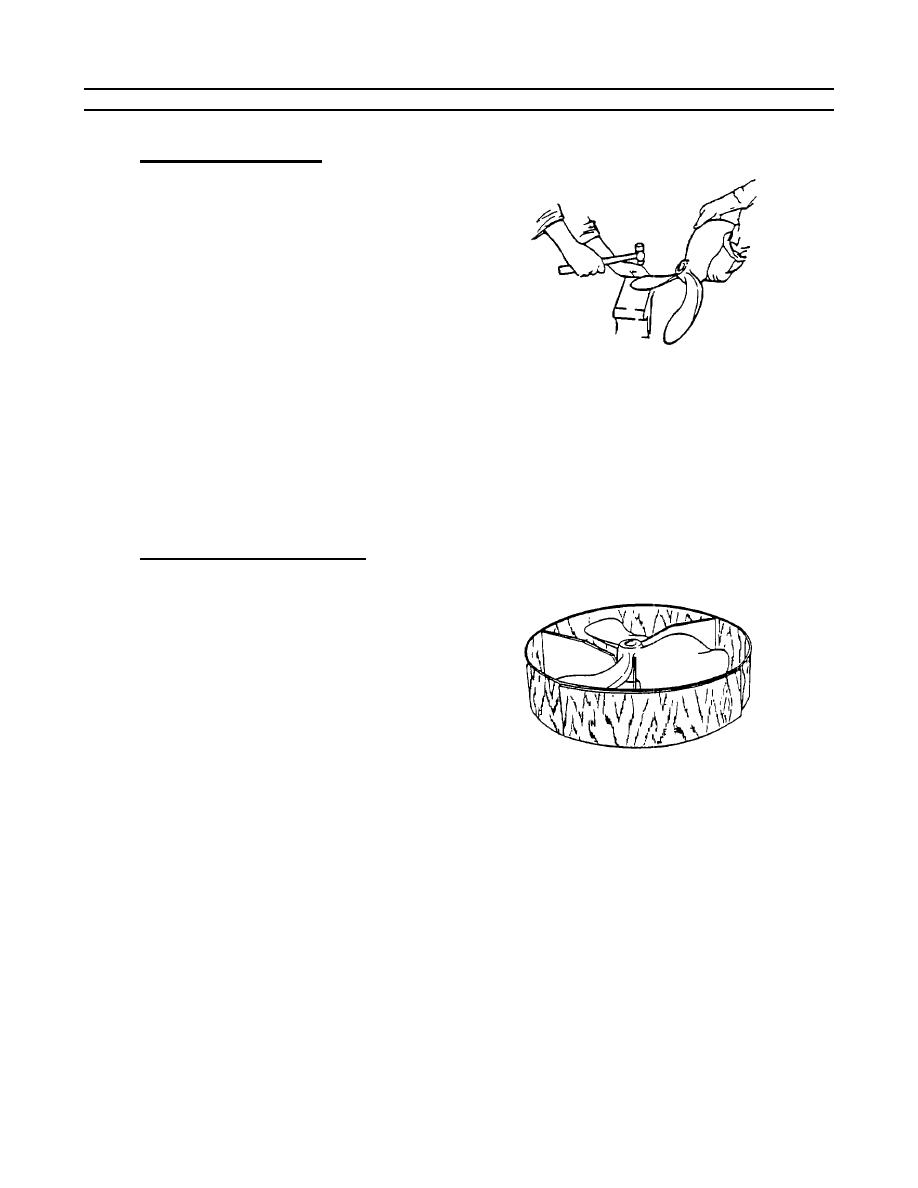
| Tweet |

Custom Search
|
|

|
||
 TM 55-1905-222-14
6-23
REPAIR PROPELLER AND PROPELLER SHAFT (Continued).
b. Straightening the Blade.
On small
propellers, tightly rolled bends are unrolled
with blacksmith's tongs. Other irregularities
are peened. It is advantageous to peen a
bend on its concave or hollow side. On
small propellers, strike the blade with a
light hammer while backing the peening
with the blade on an anvil. A typical
peening operation is shown at right. Large
propellers are peened by using air
hammers with a round edge caulking tool.
The metal unrolls like wet leather under the
hammer when the blade is at the correct
temperature. Work should be stopped and
the propeller reheated when the sound of
the metal under the hammer changes from
a dull, flat sound to a sharper, ringing
sound. Most blades can be reshaped with
two or three heatings. During straightening
operations the propeller should be
compared occasionally to a propeller pitch
block.
c. Making and Using a Pitch Block. A pitch
block can be made by pouring concrete in
a plywood box and shaping the upper
surface of the concrete to fit a new
propeller. The figure at right shows a badly
damaged propeller on a block before
straightening.
Refer to the figure showing the propeller on
the pitch block after straightening. In figure
at right the upper edges of the blade are
about an inch above the pitch block. This
is because the pitch block is for a propeller
with a pitch of 17 inches, where the
propeller is a 24 inch diameter propeller
with a pitch of 18 inches. An efficient
blacksmith with an eye for blade
configuration can determine the amount of
shaping and pitch alignment.
6-122
|
||
 |
||